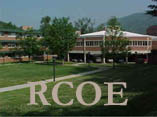INTASC Principles
ISTE National Educational Technology Standards
INTASC Principles
tools of inquiry, and structures of the discipline(s) he or she
teaches and can create learning experiences that make these
aspects of subject matter meaningful for students.
Principle #2: The teacher understands how children
learn
and develop, and can provide learning opportunities that
support their intellectual, social and personal development.
Principle #3: The teacher understands how students
differ in
their approaches to learning and creates instructional
opportunities that are adapted to diverse learners.
Principle #4: The teacher understands and uses
a variety of
instructional strategies to encourage students' development
of critical thinking, problem solving, and performance skills.
Principle #5: The teacher uses an understanding
of
individual and group motivation and behavior to create a
learning environment that encourages positive social
interaction, active engagement in learning, and
self-motivation.
Principle #6: The teacher uses knowledge of effective
verbal,
nonverbal, and media communication techniques to foster
active inquiry, collaboration, and supportive interaction in
the classroom.
Principle #7: The teacher plans instruction based
upon
knowledge of subject matter, students, the community, and
curriculum goals.
Principle #8: The teacher understands and uses
formal and
informal assessment strategies to evaluate and ensure the
continuous intellectual, social and physical development of
the learner.
Principle #9: The teacher is a reflective practitioner
who
continually evaluates the effects of his/her choices and
actions on others (students, parents, and other professionals
in the learning community) and who actively seeks out
opportunities to grow professionally.
Principle #10: The teacher fosters relationships
with school
colleagues, parents, and agencies in the larger community to
support students' learning and well-being.
